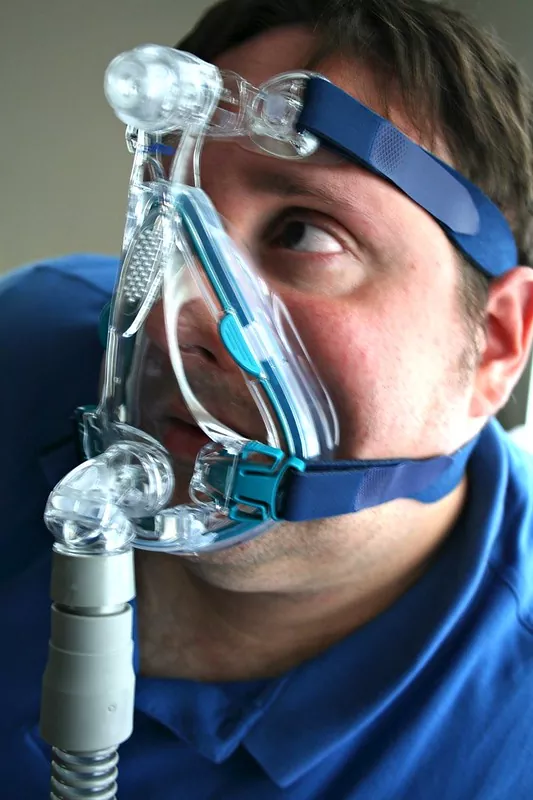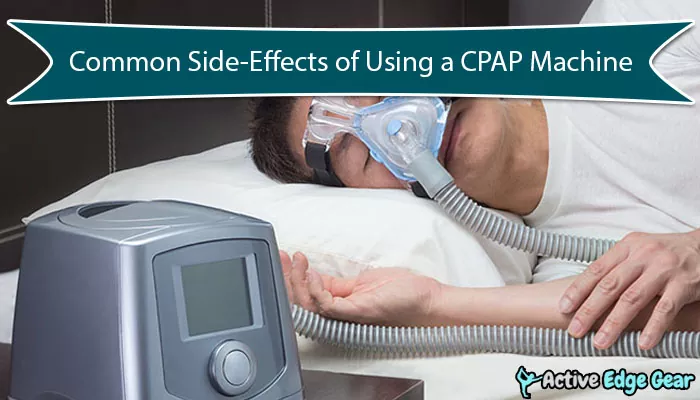Despite CPAP or Continuous Positive Airway Pressure being considered as one of the more appropriate therapeutic options for treating Obstructive Sleep Apnea, it doesn’t come without its share of side-effects.
Although the benefits clearly outweigh the issues at hand, you should be aware of the same for an all-inclusive approach towards usage.
What are the generic problems associated with CPAP Usage?
Before getting to the broader perspective of the problems of CPAP side-effects, we shall enlist the pain points that often show up during CPAP usage.
In most cases, people end up purchasing the wrong mask without paying much attention to size or facial structure. We have a detailed guide on choosing the right mask.
Moreover, if you have been recently detected of the condition, adjusting to the wearable might be an uphill task, especially when it comes to donning the same while sleeping. Moreover, the pressurized air might also take some time to get acclimatized to. Not just that, you must be careful while choosing the perfect hose, based on the diameter.
If you have been using a CPAP machine for long, you must also account for skin irritation, pressure sores, and inadvertent leakages. If these issues are enough, a lack of adaptability to the procedure might also result in a dry nose or mouth.
5 Side-Effects of using CPAP machines

Based on the mentioned issues and bottlenecks, CPAP usage can be segregated further into five side-effects, which can be dealt with if you are proactive with the process.
Feeling Claustrophobic
CPAP masks are strapped onto the face which might make a person claustrophobic to a considerable extent. As compared to a basic mask, full face options are more restrictive when facial freedom is concerned. The best way to scale beyond this issue is by considering the nasal pillow or masks that only cover the nose or the mouth.
In case the doctor has recommended a full-face mask, try and adapt to the same progressively and gradually. Always scan the market for a more comfortable mask and a CPAP device that comes with the SOD or ‘Sleep Onset Detection’ attribute. This approach eases your adaption by offering an incremental increase in the air pressure based on sleep patterns.
Dryness
A CPAP machine ensures proper air circulation into the airways via pressurized or selectively humidified air. However, the process is capable of congesting the sinus or even the nasal passages, more so when dry and warm air is pushed into the airway. Besides rendering the passages dry, extensive CPAP usage can also lead to burning sensations in the patient’s lungs.
A good way to combat the threat is by getting a humidifier or moisture-enhancing chamber.
Air Leakage
In case your CPAP usage concerns a higher pressure and a small mask, it is necessary to account for air leakage and scale beyond the same. Any form of air leakage makes the process useless and, therefore, adjusting the mask fit becomes all the more important.
Aerophagia
If you are using the CPAP machine for the first time, swallowing the air is a usual reaction, especially when the pressure is more than recommended. Gulping the air inadvertently can result in Aerophagia (1) which is often attributed to discomfort, bloating, and belching.
A good way to handle this side-effect is by opting for lower-pressure calibration and increasing the push gradually, based on the adaptability.
Reduced Mobility
Individuals might need to visit the restroom once a while at night but CPAP usage restricts mobility. Moreover, removing and wearing the mask frequently might interfere with the initial alignment. Therefore, it is necessary to disconnect the entire mask from the machine and carry the same along instead of removing the mask from the face.
Risk of infection
In rare cases, long-term use of a CPAP machine may lead to overgrowth of bacteria in the airway. This can cause infections such as sinusitis or pneumonia. To reduce the risk of infection, it's important to maintain good hygiene by regularly cleaning the CPAP machine and mask. This includes washing the mask and replacing the filters on a regular basis. Checkout the best practices to use a cpap machine.
Psychological side effects
Some people may experience psychological side effects from using a CPAP machine. For example, they may feel claustrophobic or anxious while wearing the mask, or they may have trouble adjusting to the noise of the machine. In these cases, it may be helpful to work with a sleep specialist to find ways to overcome these issues. They may suggest trying a different type of mask or finding ways to reduce the noise of the machine.
Are there any long-term side effects of using CPAP?
There are a few potential long-term side effects of using CPAP, though they are rare and usually resolved with changes to the therapy. One such side effect is called 'Mask Intolerance Syndrome', which refers to discomfort from wearing the CPAP mask. This can often be resolved by switching to a different type of mask.
Another potential long-term side effect is nasal congestion or irritation, which can usually be alleviated by using a humidifier with your CPAP machine.
In rare cases, some people may develop sinus infections as a result of using CPAP. However, these infections can usually be treated with antibiotics. Overall, the long-term side effects of CPAP are rare and can often be resolved with minor changes to the therapy.
As a new or seasoned CPAP machine user, you need to take these side-effects into consideration while making amends to fix the same with immediate attention before incorporating the same as your go-to resource against any form of sleep apnea.
While CPAP therapy is generally safe and effective, there may be some long-term side effects to consider. It's important to pay attention to any skin irritation, nasal congestion or dryness, and the risk of infection, and to work with a healthcare provider to address any issues that may arise. With proper care and maintenance, CPAP therapy can be a successful treatment for sleep apnea.

